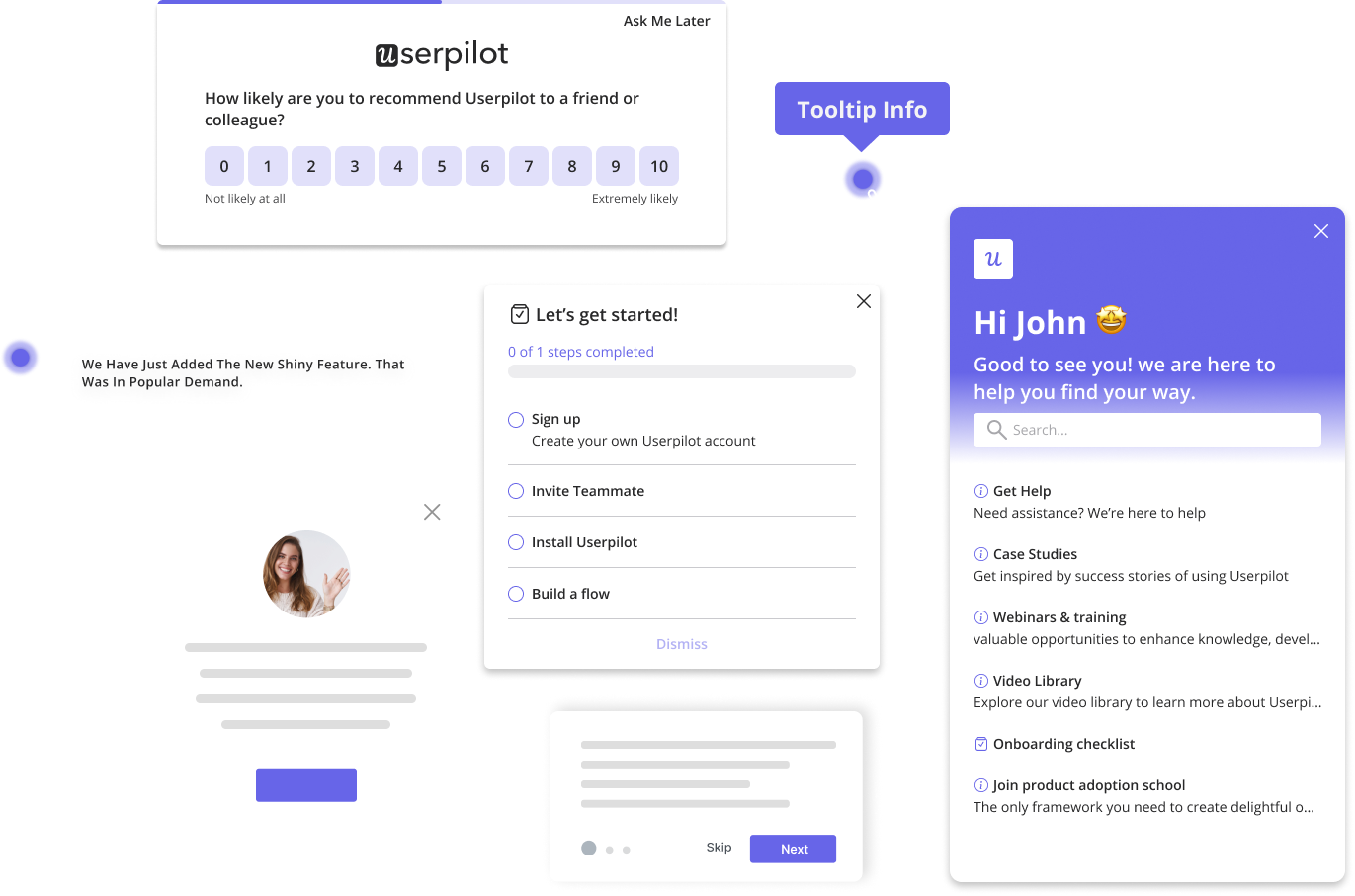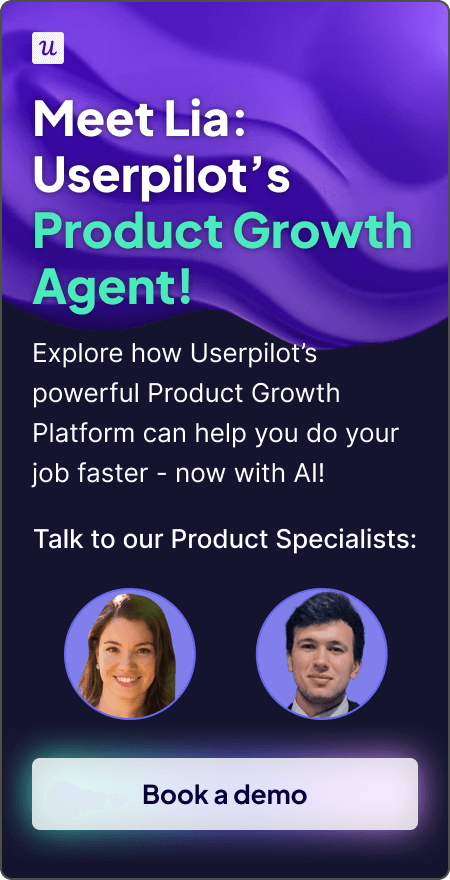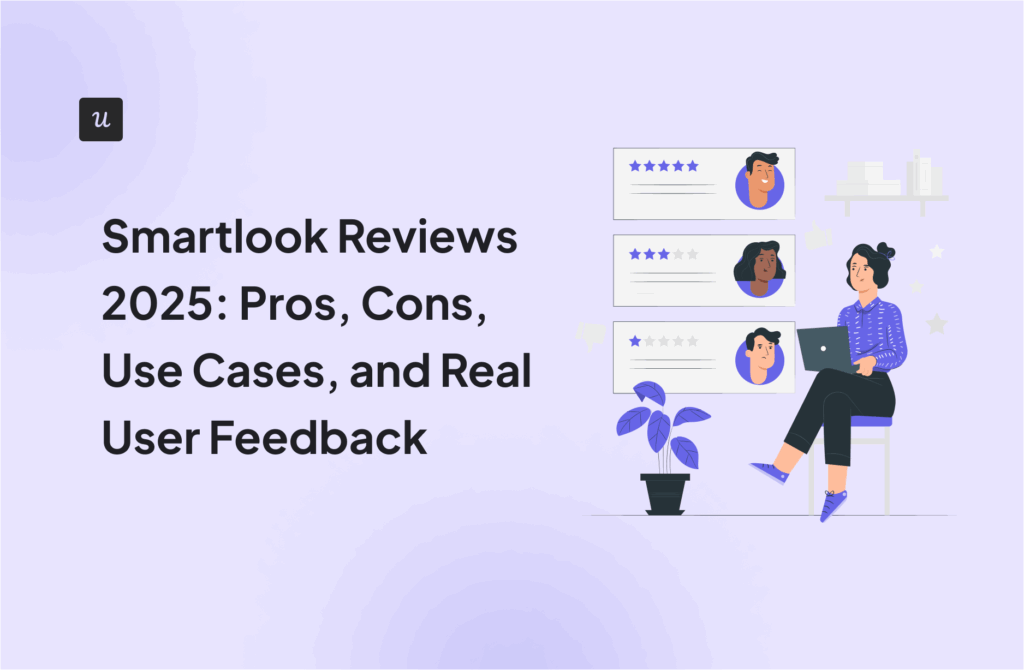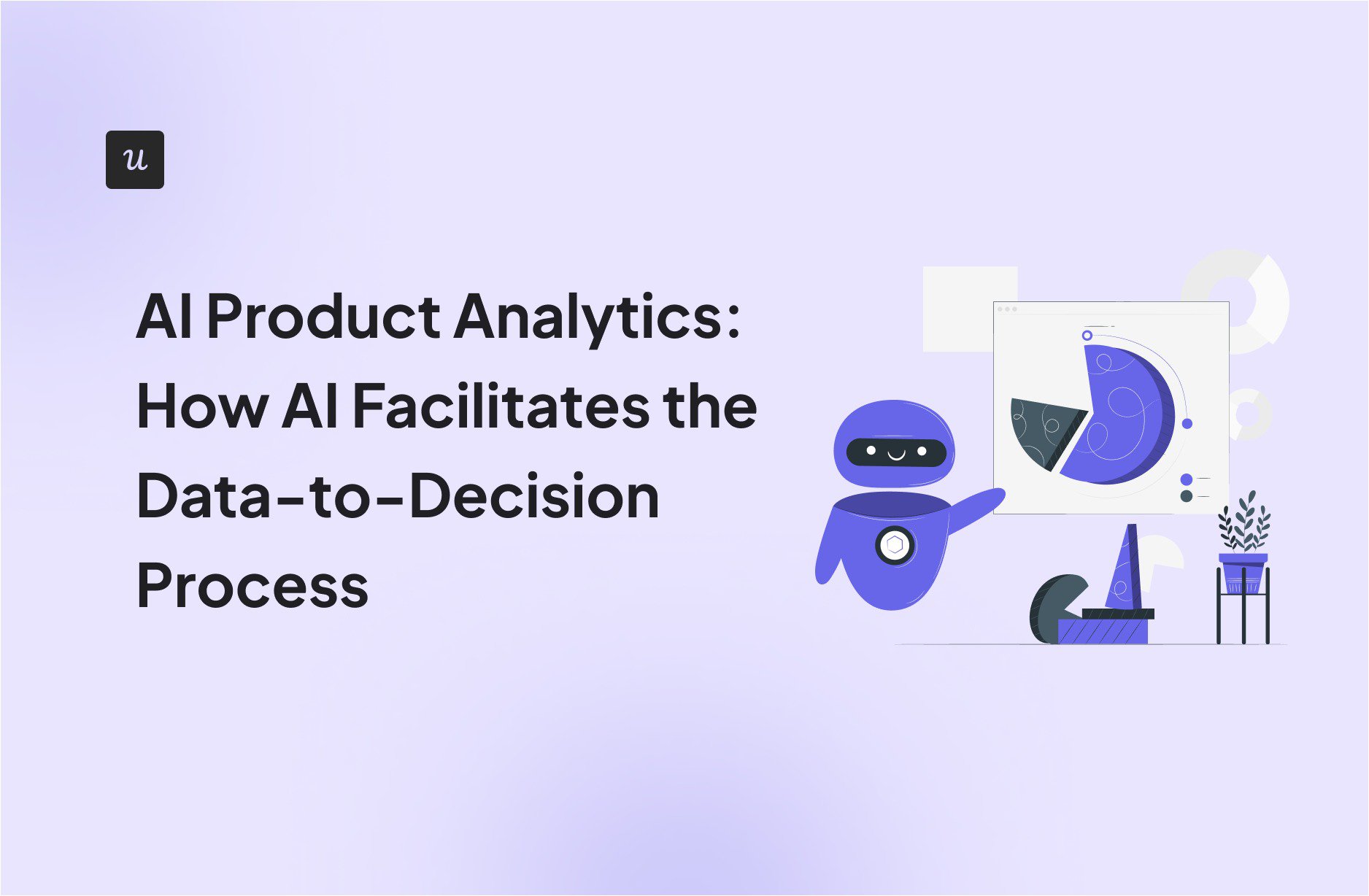
Product teams are drowning in dashboards, surveys, funnels, and session recordings. The tools are there. Still, turning raw data into actionable insights remains the bottleneck. Most product managers I know spend 80% of their time analyzing data and only 20% actually driving outcomes.
That’s where AI product analytics makes a difference.
By applying machine learning to user behavior data, AI uncovers patterns, predicts behavior, and automatically flags risks. It transforms weeks of data analysis into minutes, surfacing real-time insights that matter without the manual grind.
In this article, I’ll show how AI transforms product analytics from a reporting task into a decision-making engine.
Try Userpilot Now
See Why 1,000+ Teams Choose Userpilot
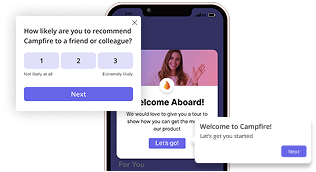
Why AI for product analytics?
At first, I didn’t buy the AI hype.
I’d seen too many tools promise “instant insights” only to dump more dashboards on my plate. But once I started using AI data analytics to analyze user behavior patterns across thousands of user sessions, something clicked.
AI won’t solve everything. But it’s the most tireless, pattern-spotting assistant I’ve ever had.
Traditional analytics tools show you what happened. AI product analytics accelerates this process by automating data analysis, highlighting current changes, and surfacing data-driven insights more quickly.
Instead of manually slicing data to find drop-offs or user behavior trends, I get instant clarity on where users are stalling and which behaviors correlate with retention or churn.
Here’s where AI really helps:
- Spotting patterns at scale: I’ve seen machine learning detect correlations that would’ve taken a data analyst days to uncover. For example, discovering users who complete onboarding tasks in their first session is 3x more likely to retain.
- Handling repetitive analysis work: From processing unstructured data to automating repetitive complex tasks like flagging anomalies in customer behavior, AI helps me focus on decisions instead of digging through noise. This is especially powerful with unstructured data like open-text survey responses, support tickets, or session recordings. AI can sort, tag, and summarize them in seconds.
- Predicting behavior shifts before they become problems: Predictive analysis can forecast churn risk or adoption drop-offs based on behavioral baselines. It’s not magic, but it gives me a head start on data-driven decision-making. Spotting churn early allows teams to mitigate risk before revenue loss compounds.
That said, AI isn’t doing the job for you.
It won’t handle your product management strategy or set up your analytics goals. It won’t define your KPIs. And it definitely won’t tell you what your product strategy should be. You still need to know what you’re looking for, even when working with high-quality data. AI just makes it faster to derive insights that drive business outcomes.
We’re exploring how to bring these capabilities into Userpilot, but for now, I’m speaking from experience, not a sales deck. If you’re drowning in dashboards and trying to turn data into actionable insights, this is where AI starts to earn its keep.
AI product analytics use cases
From my experience implementing AI across different SaaS product teams over the past two years, these four capabilities deliver the most immediate impact on product performance:
1. Data processing and analysis
Most analytics tools give you numbers, but they often stop short of telling you what those numbers mean. What makes machine learning powerful is its ability to go beyond structuring data, working seamlessly across both metrics and unstructured inputs.
It can uncover hidden patterns in usage data and extract insights from open-text feedback, session replays, and behavioral anomalies that are typically not visible in standard reports.
That’s where machine learning makes a real difference. I’ve seen it analyze thousands of NPS responses, user comments, and drop-off points to surface issues we didn’t even know existed. More importantly, it flags them while they’re happening, not a week later in a retro.
One team I worked with saw a 15% drop in signups on a Tuesday morning. Traditional reporting didn’t catch it until Friday. Machine learning spotted it in hours, isolated it to a single segment, and linked it to a recent change in their onboarding flow.
That kind of real-time insights turns data from a rearview mirror into a forward-facing guidance system.
2. AI modeling for predictive analysis
By the time churn shows up in your dashboard, it’s already too late. That’s something I learned the hard way.
Predictive analysis flips that. It involves building machine learning models (like churn models) that are trained on your historical customer behavior data. These models learn behavioral baselines, so they can flag early warning signs when something starts to shift.
For example, I worked with a SaaS team that discovered a sharp drop-off during onboarding: users who completed only 2 out of 5 steps had an 80% churn rate within 30 days. With that insight, they built a simple intervention that triggered targeted help flows when users stalled and ended up saving nearly 40% of those accounts.
This kind of data-driven decision-making lets product teams act earlier. It’s especially helpful for product managers when prioritizing retention initiatives, identifying hypotheses for why churn or adoption shifts are happening. Then you can even plan interventions that move the needle.
While we’re not yet offering this inside Userpilot, I see it as a valuable direction. As AI capabilities advance, building these kinds of models could become far more accessible for product teams, not just data scientists.
3. Personalization and recommendations
Userpilot already lets you personalize customer experiences based on user behavior, roles, and lifecycle stages. I use it to trigger context-aware messages, localize content in different languages, and refine UI copy instantly using our AI writing assistant.
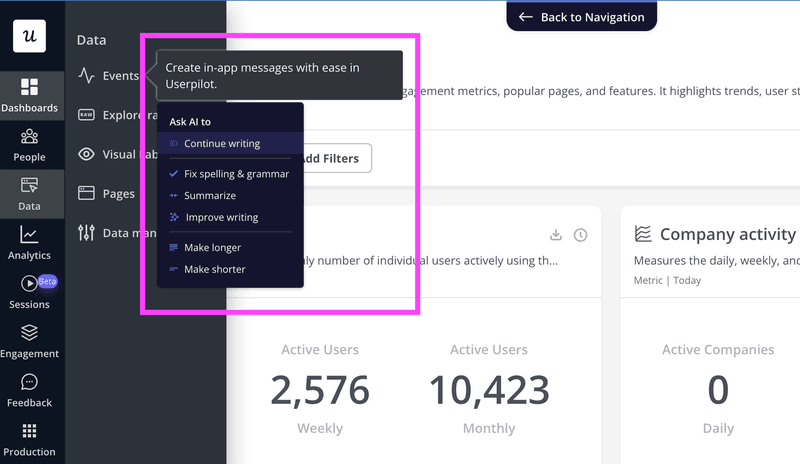
But customer journey personalization can go beyond just messaging.
The next step is combining behavior and conversion data to deliver smarter nudges like recommending Feature B to users who already love Feature A, or guiding power users toward advanced actions based on past patterns.
We’re working toward AI agents that not only identify segments needing attention (e.g., early churn risk) but also automate repetitive tasks by suggesting and building flows tailored to them with localized, on-brand copy.
Practical AI applications in product analytics
These capabilities sound promising in theory. But how do they actually work in practice? Here’s how I put AI to work in my day-to-day decisions:
1. Pinpoint user behavior patterns
Most product teams already track the right data, but pulling deeper insights from it is another story. Dashboards overflow, metrics multiply, and the insights you actually need become harder to spot.
That’s where machine learning and automation can help. Instead of manually digging through reports, it will scan your existing dashboards and surface relevant insights into what’s shifting. Think: “Activation dropped 12% this week. Users are stalling at Step 2 of onboarding.”
Userpilot already gives you rich behavioral data through event tracking, funnels, and session replays. What we’re building next is the AI layer that turns that data into instant, actionable recommendations so you can make informed decisions and save valuable time.
Want to see what this will look like? Sign up for our founder’s talk at Product Drive for an early preview. And watch our head of product design share insights on upcoming features to Userpilot.
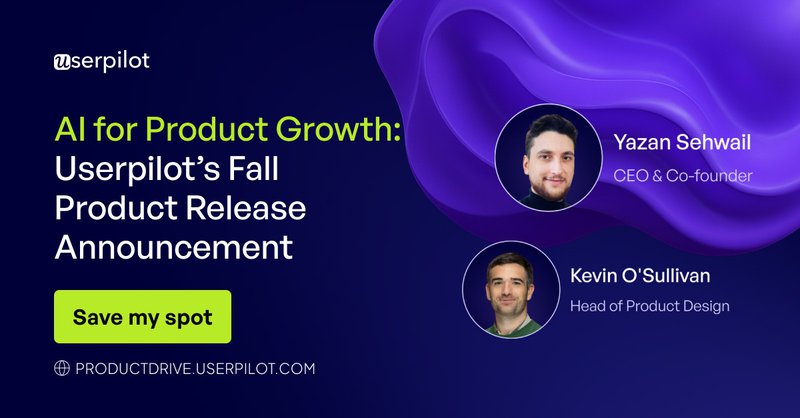
2. Optimize user journeys & conversions
Getting users to the ‘Aha!’ moment isn’t just about the path. It’s about knowing which steps actually drive conversion. That’s the hard part.
AI helps by analyzing your existing data on user behavior to surface what’s working, what’s not, and why. It highlights hidden patterns like users from Brazil converting twice as fast as those from Colombia, or shows which features different segments are adopting in their customer journey.
Right now, I use Userpilot’s funnels, path analysis, and activation dashboards to visualize the journey. But interpreting those patterns still requires manual work instead of automation.
Coming soon to Userpilot: an AI agent that identifies the touchpoints that truly drive conversion. It’ll break down adoption trends by segment, highlight correlations tied to conversion, and help you understand whether your product health is improving or quietly slipping.
3. Personalize user experiences at scale
It’s one thing to build segments. It’s another to know when those segments need something different and act on it fast.
Userpilot already lets you trigger personalized in-app flows based on specific user behavior patterns, roles, or lifecycle stages. You can tailor content dynamically, and our AI writing assistant helps save time on message creation for tooltips, modals, and checklists.
But true scale means less guesswork.
That’s why we’re working on AI capabilities that analyze user behavior across segments, flag groups that need intervention, like stalled onboarding or early churn risk, and generate targeted flows automatically. You’ll be able to localize content, surface the right features, or guide power users toward advanced actions.
4. Turn qualitative feedback into actionable insights
I’ve spent too many hours reading survey comments manually, trying to spot patterns. It’s inefficient and easy to miss what really matters. Quantitative data shows trends, but qualitative feedback reveals why users behave the way they do. The challenge? It’s buried in thousands of open-ended responses.
That’s why automated text analysis tools are now standard across data teams. They can categorize responses, detect sentiment, and surface key themes. Think of it as going from raw NPS responses to “Top reasons for dissatisfaction: billing friction and missing integrations” without lifting a finger.
With Userpilot, you can already collect survey feedback and use tags to categorize responses and surface themes.
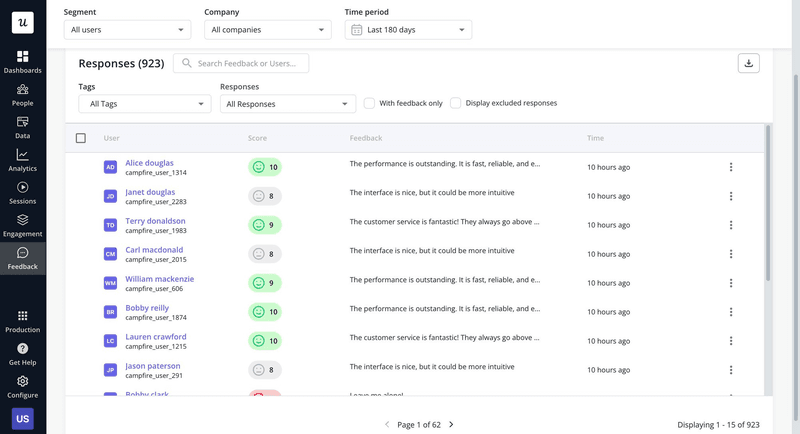
But manually tagging and interpreting this feedback are still repetitive tasks that take time and make it easy to miss trends. That’s why we’re working on bringing AI data analytics into this process to automatically parse open-text responses, detect sentiment, and summarize key patterns across segments.
The goal: turn thousands of responses into actionable insights about what users love, what frustrates them, and where you should focus next without the manual slog.
Experience the next evolution of AI product analytics live!
You’ve seen what AI product analytics can do. At Product Drive, we’re showing what it’s doing right now inside Userpilot.

Join our founder’s session to stay ahead on how your analytics can evolve from passive dashboards to proactive copilots.
AI gives you better data and faster signals, but your judgment turns them into real outcomes. See how Userpilot spots the behavioral patterns hiding in your data and turns them into growth opportunities in under 15 minutes. Book a free demo with Userpilot today!

